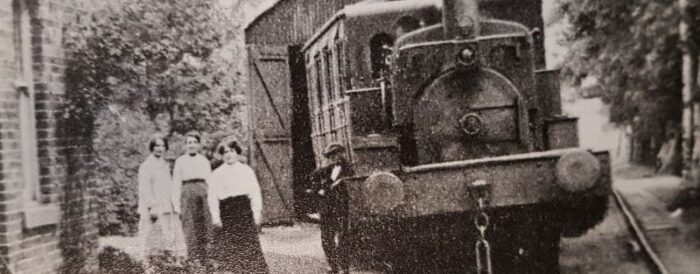Coal mining has been known in the area for many years , in fact the earliest recording was in the 1262 when William and Alice de Baruby took a 20year lease on land in Shippen. (Shippen Marsh and Cattilhead which lie beside of the Leeds to Garforth Railway line Between Barrowby hall and the Golf Course. In these early times coal was only cropped at the surface using picks and spades.
In the 14th century workings involved Bell Pits – shallow holes wider at the bottom than at ground level. The population of Garforth at this time was record as 49 so the output must have been quite small.
By the end of the 16th century the Gascoigne name became associated with mining, Sir John Gascoigne owned workings at Oxclose, Barnbow, Lazencroft and Whinmoor.
The presence of these coal working influenced the development of roads and later railways. The opening of the Aire Calder Canal in 1700 fostered the development of collieries in the area and the real trade from the coalfields began. Two toll roads were developed. Wakefield to Aberford in 1742 and Leeds to Selby in 1740.
In the years between 1830 and 1840 when the population was 782 the first pit shafts were sunk by the Gascoigne family.
In the hundred years from 1831 -1931, the village of Garforth changed from a farming community to a more industrial one.
In 1865 a strike too place but Garforth Miners did not strike due to the respect they had for their employers.
In 1893 a decision to cut miners wages caused another strike but some Garforth miners chose to work which caused local ill-feeling. A mob of 5000 Yorkshire colliers came to Garforth and caused a large amount of damaged to local property.
The following few years were reasonably prosperous when output reached 440,000 tons per year.
A comprehensive account of mining is available the following Parlington website.
Isabella & Elizabeth Pits

The Isabella was opened in 1833 and was named after Sir Robert Oliver Gascoigne’s eldest daughter. It was located on the Flyline (now Ash Lane) and approximately on the site of Proctors (2023). It was worked out in 1925, three years after the Sisters Pit. The pumps were stopped and the mine flooded. The estimation of reserves in the 1830s that this pit would last for 92 years proved correct within one month.
The Elizabeth pit was sunk a few years later a little further down the Flyline
Aberford Railway – The Fly Line


Sir Richard Oliver Gascoigne built the Fly Line in 1830s to carry coal from Garforth to Aberford originally using horses. At least they were used for the return journey as the train would free wheel down to Aberford. Passengers were later introduced riding on The High Flyer until 1881. The free wheeling continued after the introduction of steam in 1870. Via this line Aberford residents had the means to get to Leeds on the Leeds/Selby Line. The line closed in1924. The Lady in the Centre is Mabel Hebden.(this information provided by Brian Siberry – she was his grandmother)
A detailed description of the Fly Line is available on the following website
Sisters Pit

The Sisters Pit was sunk in 1843 just off Barwick Road behind Townend. It was worked out in 1922
Sisters Villas
Located off Barwick Road


Sisters Villas and the remnants of the spoil heap under the trees
Trench Pit

In 1899 the Trench was sunk off Ninelands Lane and named after the Sir Frederick Charles Trench Gascoigne. (*) Isabella’s husband. (*) Both husbands took the Gascoigne name on marriage. This mine closed in 1930 as a result of the 1926 general strike and flooding issues. At the time 492 men were employed there.



This photograph was taken in Stocks Blocks Yard ,Aug 2016, Shows the position of mine shaft and the last remaining Colliery building in Garforth. It was demolished in Nov 2016
Views of Ninelands Lane in 1960s
End of Coal Mining Era in Garforth
After the First World War the former prosperity did not return and in 1919 Col F.R.T.T. Gascoinge decided to sell his mines.
Although pits were closing in the 1922s, a new one was sunk at Barnbow using electrical power. After the General Strike of 1926 Garforth Collieries was in financial difficulties and were bankrupt by 1930.
Both the new Barnbow Pit and the Trench pit closed in that year and the mining era in Garforth ended.
However Open Cast Working did continue from 1940s through to 50s and 60s, the last of these closing in 1967. Fred Knowles recalls as child visiting a site opposite the Golf Course to watch a fire that the had started spontaneously. He stayed too long and got into trouble when he got home.
Before the construction of the M1-A1 link two new open cast sites were started in the 1990s. One at the near Barwick Road by R.J.Banks and another at Hawks Nest Wood Rackwood Colliery Co.










